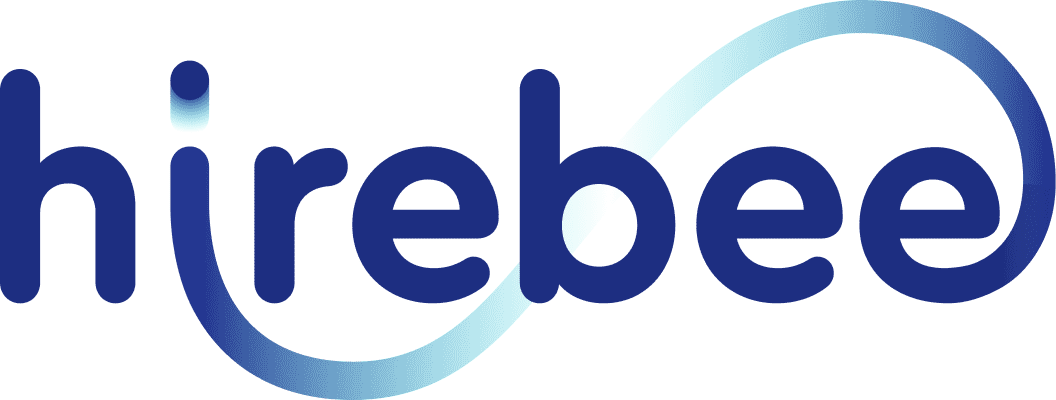Hiring the right talent isn’t just about filling positions; it’s about shaping the future of your company. The success of any organization relies on its workforce, and an effective hiring process ensures that you bring in the best individuals who align with your business goals. However, recruitment is more than just posting a job listing and conducting interviews—it requires a strategic, well-planned approach to attract, assess, and onboard the right candidates efficiently.
In this guide, we will explore the most effective hiring process steps that can help businesses of all sizes streamline their recruitment efforts. From identifying hiring needs to onboarding new employees, we’ll cover each stage in detail to help you refine your approach and build a strong, high-performing team.
Table of Contents
ToggleWhat is the Recruitment Process?
The recruitment process is a structured approach that organizations use to attract, evaluate, and hire the best candidates for a job. It ensures that the right talent is brought into the company while optimizing time and resources. For growing organizations, hiring software for small business can play a critical role in managing this process efficiently. A well-defined hiring process enhances workforce quality, reduces turnover rates, and strengthens the company’s overall performance.
The recruitment process typically consists of several stages, including job analysis, sourcing, screening, interviewing, selection, and onboarding. Each stage is crucial in ensuring that the organization not only finds a suitable candidate but also integrates them effectively into the workplace.
Key Benefits of an Effective Recruitment Process:
- Improves Hiring Quality: A systematic recruitment approach helps in identifying and selecting the best candidates, ensuring that they possess the necessary skills and qualifications.
- Saves Time and Resources: A well-structured hiring process reduces inefficiencies, streamlining hiring efforts and minimizing delays.
- Enhances Employer Branding: A smooth and professional recruitment experience reflects positively on the company, making it an attractive employer for top talent.
- Reduces Employee Turnover: By ensuring the right fit for the company culture and job role, organizations can reduce turnover and increase employee satisfaction.
- Supports Business Growth: Hiring the right people strengthens the workforce, contributing to long-term success and organizational stability.
Understanding and refining each step of the recruitment process helps companies build a strong team that aligns with their business goals and industry demands.
Top Hiring Process Steps
Building a high-performing team requires a structured and strategic hiring process. Following a clear set of steps helps organizations streamline their recruitment workflow, reduce inefficiencies, and ensure they’re selecting the right talent for their specific needs. Below are the top steps in the hiring process that companies of all sizes should consider:
Developing a Strategic Recruitment Plan
A strategic recruitment plan is essential for aligning hiring practices with the company’s business objectives. A well-thought-out plan not only details the number of positions to be filled but also ensures that the recruitment efforts are aligned with long-term business goals. For example, if a company is planning to expand into new markets, the recruitment plan should prioritize hiring talent with relevant experience in those markets. Companies should also decide on the allocation of resources and set a realistic timeline for each recruitment campaign.
Identifying Your Hiring Needs
Understanding the precise hiring needs of your organization is the first critical step in the process. This involves not only assessing the current and future needs of the business but also identifying the skill gaps within the existing workforce. A comprehensive analysis of job roles, required qualifications, and desired competencies will allow hiring managers to tailor their job postings and recruitment strategies more effectively. Regularly revisiting and updating these needs helps avoid unnecessary hiring and ensures the recruitment process remains aligned with changing business objectives.
Selecting the Right Channels to Reach Your Target Audience
Not all recruitment channels are created equal. Different job roles and industries require different sourcing strategies. For example, highly technical roles such as software developers or engineers may be best sourced through specialized platforms like GitHub, while creative roles in marketing may require tapping into social media channels like Instagram or LinkedIn. Additionally, employee referral programs, partnerships with universities, and job boards dedicated to specific industries can also be leveraged to reach top talent. Understanding which channels are most likely to attract the desired candidates helps organizations improve both the quality and quantity of applicants.
Crafting a Clear Job Description
The job description serves as the first point of contact between the company and potential candidates. It must be clear, engaging, and tailored to the role and the type of candidate the company is seeking. A well-crafted job description should not only list job responsibilities and qualifications but also provide insights into the company’s culture and values. Additionally, outlining opportunities for growth within the role and company can make the position more attractive to top talent. Job descriptions that are specific, accurate, and concise have been shown to attract higher-quality applicants, reducing the time spent on unqualified candidates.

Sourcing Candidates
Sourcing is an ongoing, proactive process that goes beyond posting a job and waiting for applications. It involves actively searching for candidates through multiple channels, such as professional networking platforms (e.g., LinkedIn), job boards, and attending career fairs or industry events. Sourcing can also involve direct outreach to passive candidates—those not actively looking for a job but who might be interested in a new opportunity if approached with the right offer. Building a strong talent pipeline through effective sourcing ensures that organizations have a pool of qualified candidates ready when a position opens.
Screening and Shortlisting Candidates
Screening candidates is one of the most crucial steps in the hiring process. It involves reviewing resumes, cover letters, and application forms to identify whether candidates meet the minimum qualifications for the role. Beyond the basic qualifications, the screening process should focus on candidates’ alignment with company culture, experience, and potential to succeed in the role. Leveraging applicant tracking systems (ATS) can help streamline this process, enabling recruiters to quickly filter out candidates who do not meet the job’s requirements. Automated tools can also scan resumes for keywords and match candidates to relevant positions based on their skills and experiences.
Based on the evaluation of resumes, the hiring team selects a subset of candidates who appear to have the most potential for success in the role. These candidates meet the minimum qualifications and possess the desired skills and experiences required for the position.
As part of the evaluation process, the hiring team may conduct background checks or reference checks on the shortlisted candidates. Background checks can verify the accuracy of the information provided in the resumes, including educational degrees, employment history, and criminal records. Reference checks involve contacting the candidate’s previous employers or professional contacts to gather insights about their work ethic, skills, and performance.
The resume screening and candidate evaluation stage play a critical role in narrowing down the applicant pool and identifying the most qualified candidates for the next stage of the hiring process. It requires careful attention to detail, effective communication among the hiring team members, and a thorough understanding of the job requirements.
Assessing Candidates
Candidate assessments help employers evaluate whether a candidate has the skills necessary to succeed in the role. Depending on the position, this can include technical skills tests, psychometric assessments, or soft skills evaluations. For example, a candidate applying for a sales position may be asked to participate in a role-playing exercise to test their communication and persuasion abilities. Similarly, a software developer might be asked to complete coding challenges. The use of assessments helps eliminate biases and ensures that hiring decisions are based on objective measures of performance and suitability for the role.
Conducting In-Depth Interviews
Interviews remain one of the most important aspects of the hiring process. However, conducting in-depth interviews requires more than just a casual conversation. Structured interviews, where candidates are asked consistent questions, provide a fair way to evaluate candidates across the same criteria. Behavioral interviews, which focus on past experiences to predict future performance, are especially effective in gauging how a candidate will respond to specific situations. Panel interviews can also provide multiple perspectives on a candidate’s suitability. The interview process should be designed to assess both technical competencies and soft skills, such as problem-solving and teamwork. Below are some tips:
Scheduling interviews with shortlisted candidates:
- Contacting candidates to arrange interview dates and times
- Ensuring coordination with hiring managers and interview panel members
- Providing necessary details, such as interview format (in-person or virtual) and duration
Preparing interview questions and evaluation criteria:
- Developing a set of standardized interview questions
- Tailoring questions to assess candidates’ qualifications, skills, and competencies
- Creating evaluation criteria to objectively assess each candidate’s responses
Conducting interviews, both in-person or virtual:
- Welcoming candidates and making them feel comfortable
- Explaining the interview process and structure
- Asking questions and actively listening to candidates’ responses
- Probing further to gather additional information or clarify any doubts
- Assessing candidates’ communication skills, problem-solving abilities, and relevant experience
Assessing candidates’ skills, cultural fit, and potential:
- Evaluating candidates’ technical or job-specific skills
- Assessing their compatibility with the company’s culture and values
- Identifying candidates’ potential for growth and development within the organization
- Rating candidates based on the predetermined evaluation criteria
Using additional assessment methods (e.g., tests, presentations):
- Administering skills tests or assessments to gauge candidates’ proficiency
- Requesting candidates to complete assignments or presentations
- Observing their ability to perform tasks relevant to the role
- Incorporating feedback from assessments into the overall evaluation
Making the Offer
Once the top candidate is identified, the next step is extending a job offer. A competitive and well-crafted offer is essential for securing top talent. The offer should include the base salary, bonuses, benefits, job responsibilities, and any other relevant terms. Transparency in the offer ensures that both parties have clear expectations from the start. It’s important to consider offering additional perks, such as flexible work arrangements or career development opportunities, which may help persuade top candidates to accept the offer. Below are some tips:
Evaluating interview feedback and assessment results:
- After conducting interviews and assessments, the hiring team or hiring manager reviews the feedback and assessment results for each candidate.
- The feedback may include notes on the candidate’s performance, strengths, weaknesses, and overall fit for the position.
- The assessment results, such as scores from tests or evaluations, provide additional insights into the candidates’ abilities and suitability.
Comparing candidates’ qualifications and suitability:
- The hiring team compares the qualifications, skills, experience, and other relevant factors of the remaining candidates.
- The goal is to determine which candidate(s) best align with the job requirements, organizational needs, and cultural fit.
- This comparison involves weighing the strengths and weaknesses of each candidate and considering their potential for growth within the company.
Selecting the top candidate(s) for the position:
- Based on the evaluation and comparison, the hiring team identifies the top candidate(s) who are the most suitable for the role.
- This decision is typically made collectively, involving input from multiple stakeholders, such as HR professionals, department heads, and potential team members.
- The final selection should align with the company’s values, objectives, and long-term goals.
Extending a job offer and negotiating terms, if applicable:
- Once the top candidate has been identified, the hiring team proceeds to extend a formal job offer.
- The job offer includes details such as compensation, benefits, start date, and any other relevant terms and conditions.
- Negotiations may occur during this stage, especially if the candidate requests adjustments to certain aspects of the offer.
- The goal is to reach a mutually beneficial agreement that satisfies both the company’s requirements and the candidate’s expectations.
Note: It is important to adhere to fair hiring practices, such as avoiding discrimination and ensuring equal opportunities for all candidates throughout the decision-making process.
Onboarding and Integration
The hiring process does not end once the offer is accepted. Onboarding is the final and ongoing phase that ensures new hires integrate smoothly into the company. An effective onboarding process helps new employees understand their roles, the company culture, and the expectations placed upon them. It typically involves a structured induction program, training, and mentorship opportunities. Proper onboarding can improve employee retention and engagement, reducing turnover during the crucial first months of employment. A successful onboarding experience can set the stage for long-term success by helping employees feel valued and equipped to perform their best from day one. Below are some tips:

Facilitating the transition from candidate to employee:
- Once a candidate has accepted the job offer, the onboarding process begins. This stage focuses on ensuring a smooth transition and integration of the new hire into the organization.
- HR departments or designated onboarding teams typically take charge of this process, providing guidance and support to the new employee.
Completing necessary paperwork and documentation:
- During onboarding, the new hire is required to complete various paperwork and documentation, such as employment contracts, tax forms, and benefits enrollment.
- This step ensures that the organization meets legal and regulatory requirements while gathering essential information from the employee.
Introducing the new hire to the company’s culture and policies:
- It is crucial to familiarize the new employee with the company’s culture, values, and mission. This involves providing an overview of the organization’s history, structure, and key policies.
- Orientation sessions or employee handbooks are commonly used to convey this information and help the new hire understand the company’s expectations and norms.
Providing training and resources for a smooth integration:
- To help the new employee succeed in their role, it is essential to provide comprehensive training and necessary resources.
- Training programs can vary depending on the position and organization but typically cover areas such as job responsibilities, processes and systems, safety protocols, and any specific skills required for the role.
- Mentoring programs or buddy systems may also be implemented to offer additional guidance and support during the initial stages of employment.
Ongoing support and follow-up:
- Onboarding is not limited to the first few days or weeks; it is an ongoing process. HR departments and managers should continue to provide support, check in with the new employee, and address any concerns or questions that may arise.
- Regular performance evaluations and feedback sessions can also contribute to the employee’s integration and development within the organization.
- By offering ongoing support, organizations can help new hires feel welcomed, valued, and motivated to contribute their best to the team and company.
Conclusion
In conclusion, the hiring process is a vital aspect of any organization’s success. By following the stages outlined above, employers can maximize their chances of finding the right candidate for the job. A well-structured hiring process ensures that job requirements are clearly defined, candidates are thoroughly evaluated, and the selected individual is seamlessly integrated into the company. Taking the time to carefully navigate each stage allows employers to make informed decisions and mitigate potential risks. Remember, the hiring process is an ongoing endeavor, and continuous improvement and adaptation are key to attracting and retaining top talent in today’s competitive job market.
Hirebee ensures that every aspect of the recruiting experience is much easier, especially with the inclusion of recruitment automation and candidate relationship management features.









